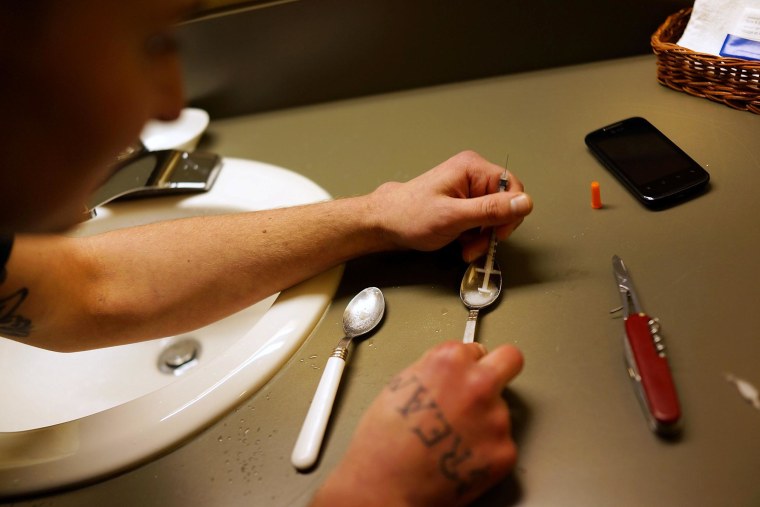Prescription drug abuse is a worse problem in the United States than heroin use, federal drug officials said Tuesday, and they said painkillers could be a gateway drug for most heroin users.
The death of actor Philip Seymour Hoffman from an apparent heroin overdose last week may have brought the street drug back into the spotlight, but purloined prescription drugs remain the bigger problem, officials from the White House and the National Institute on Drug Abuse said.
“According to the Centers for Disease Control and Prevention (CDC), we've seen roughly a 20 percent increase in overdose deaths involving prescription painkillers since 2006,” the White House Office of National Drug control policy wrote in a blog post. “In 2010, there were over 16,000 drug poisoning deaths involving prescription painkillers. There were about 3,000 drug poisoning death involving heroin that same year.”
Heroin may often be “cut” with other drugs, but all heroin is dangerous and can kill, the ONDCP says, a reference to recent reports about heroin mixed with the painkiller fentanyl to make a particularly potent and dangerous combination.
Many heroin users today appear to have gotten their start taking prescription pain drugs, the officials said.
“The pathway appears to be now moving from the prescription drugs to heroin, a very dangerous development,’ said Dr. Wilson Compton, deputy director of theNational Institute on Drug Abuse.
Opioid prescription painkillers have the same effect on the brain and body as heroin does -- causing physical addiction. Overdoses send victims into a coma, slowing heartbeat and breathing to the point of death.
“Heroin is cheaper than the prescription drugs in many parts of the country,” Compton told reporters on a conference call. Still, Compton said, just 4 percent of people who misuse prescription drugs move on to heroin. “We have, however, seen indications that heroin use is increasing among young adults, which is a serious concern,” the blog post reads.
In 2002, 122,000 people used heroin. The number rose to 272,000 in 2012.
This is one reason why the White House is pressing state and local authorities to equip first responders with a drug called naloxone, which can reverse the effects of an opioid overdose.
“Naloxone immediately restores breathing to a victim of overdose,” ONDCP director Gil Kerlikowske told reporters. “Good Samaritan” laws that protect people who call 911 from prosecution may encourage more friends and associates of heroin and pill abusers to call for help in time, Kerlikowske said.
“Because police are often the first on the scene of an overdose, the Administration strongly encourages local law enforcement agencies to train and equip their personnel with this lifesaving drug,” the blog reads.
And both officials called for more use of substance abuse treatments. Health insurance companies must now cover substance abuse treatment, under provisions of the 2010 Affordable Care Act.
